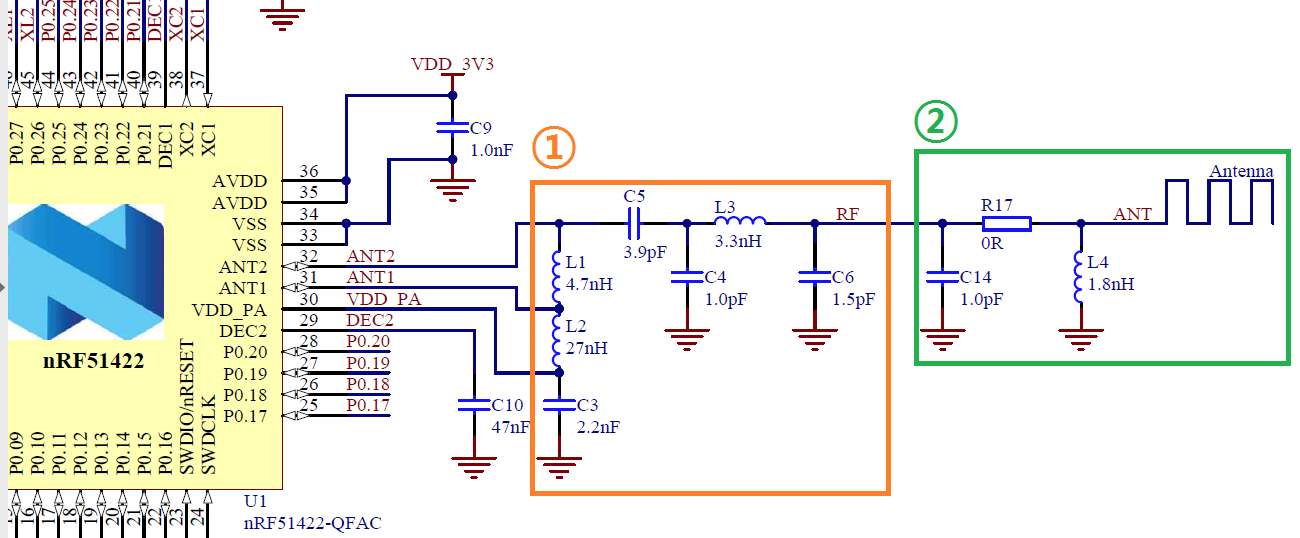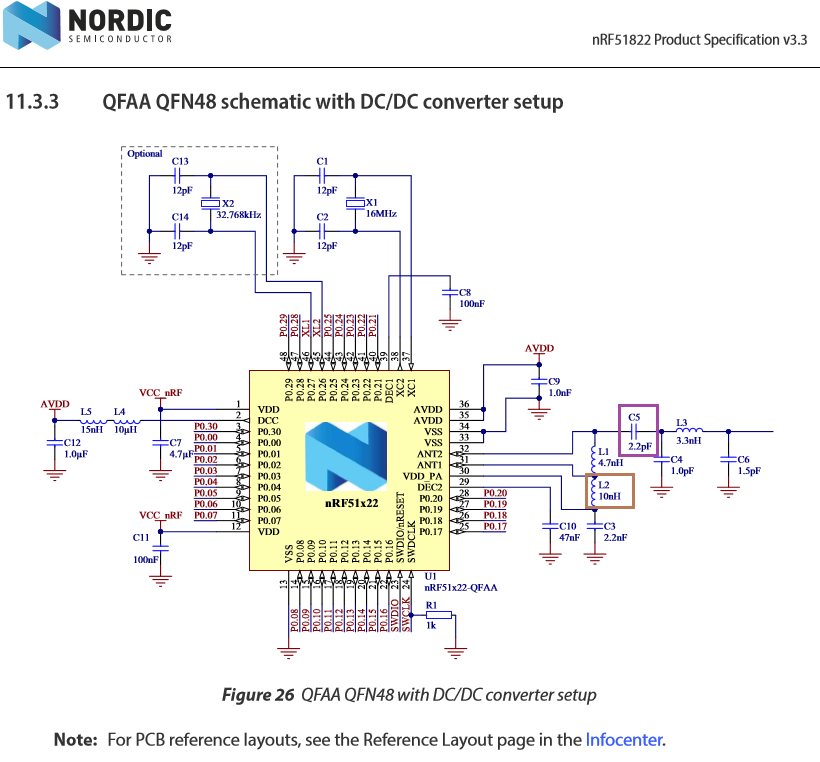Hi, I just bought the PCA10031 nRF51422 based USB dongle and PCA10028 nRF51422 based development board.
The difference between nRF51822 and nRF51422 was the ANT protocol stack.
My client wants to choose the nRF51822-QFAA for his personal reasons
and he wants to use the meander antenna which is drawn at the PCA10031.
My questions are;

- Although the nRF51822-QFAA and the nRF51422 are similar,
I want to know whether it is fine to use the same values for the RF and the antenna components, the RLC values.
I'm planning to use the FR-4, 1.6mm thick, 2-layered PCB.
Can I use the same components, which is described in the PCA10031's schematic, when I work with nRF51822-QFAA?
// Edited 2017.05.09 - Summary & Compare referring Jørn's answer


- I just want to double check.

Compared to the Inverted F antenna, the meander antenna, which is drawn on PCA10031, doesn't connect the antenna trace to the ground plane, right?
- By looking at the Digi-key number, the PCA10028 (Rev 1.2.0) used FC-135 32.7680KA-AC-ND, a product that uses 9pF as the load capacitance.
In this blog,
C1 = C2 = 2Cl - C_pcb - C_pin // C_pcb + C_pin is approximately 4 pF
I expected the capacitor values to be 14pF. However, the schematic tells that 12pF capacitors are populated.
Is there a reason for choosing the 12pF, such as
reducing the type of items for the pick and place machine or that Rev 1.2.0 board's C_pcb + C_pin value is approximately 6pF?
-Best Regards, MANGO
